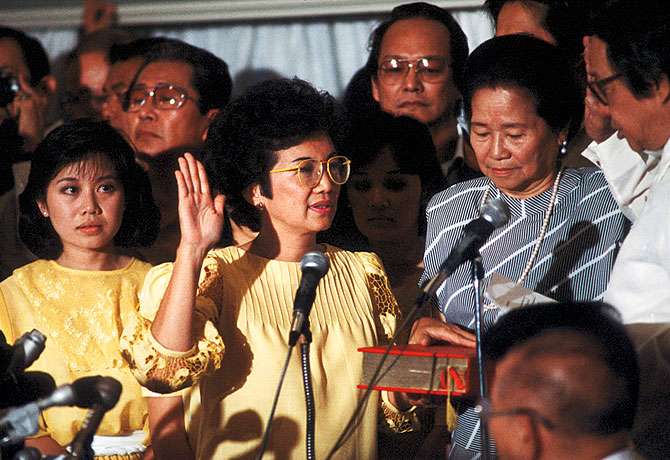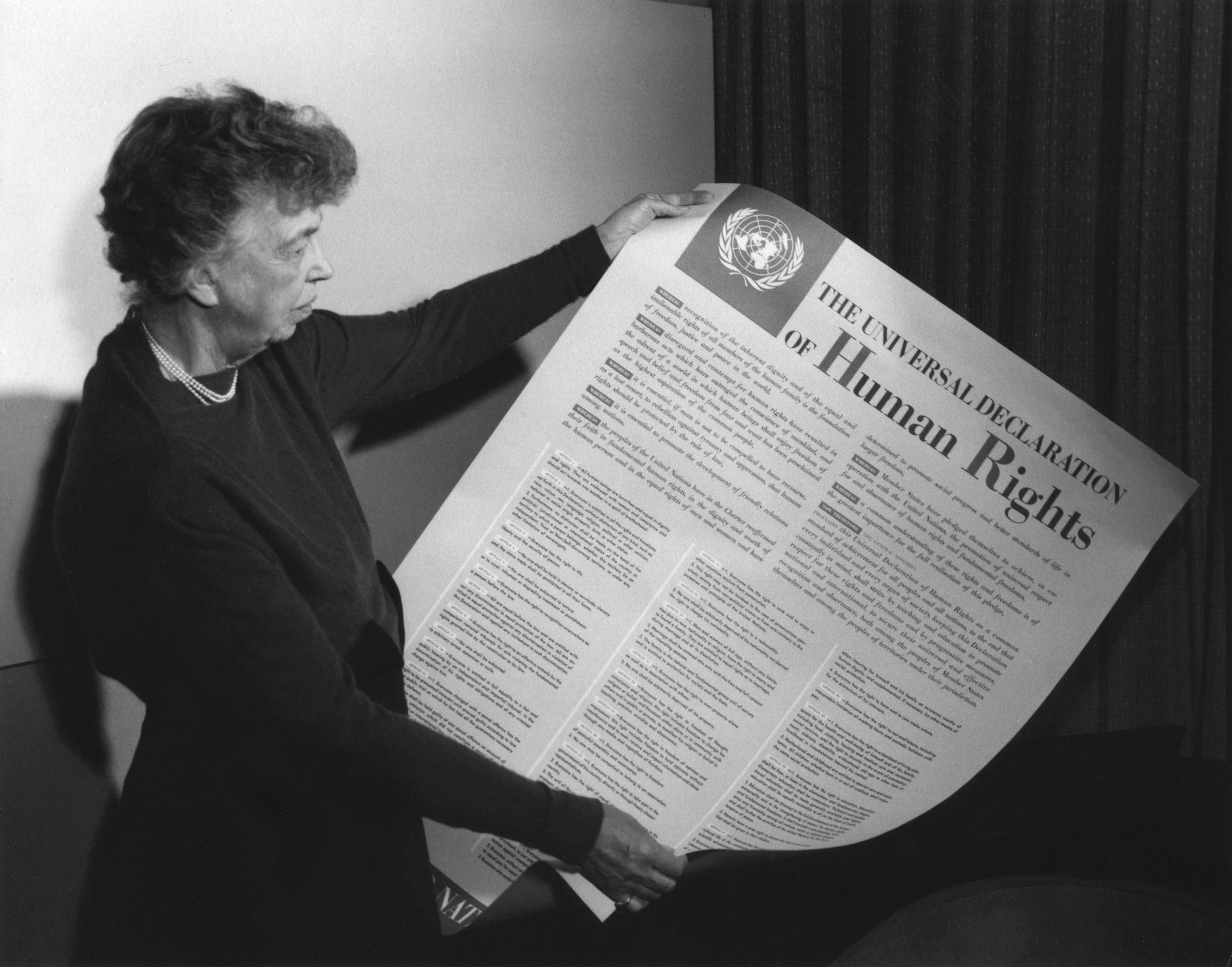|
Palimbang Massacre
The Malisbong Masjid or H. Hamsa Tacbil Mosque massacre, also called the Palimbang massacre, was the mass murder of Muslim Moros by units of the Philippine military on September 24, 1974, in the coastal village of Malisbong in Palimbang, Sultan Kudarat, Mindanao. Accounts compiled by the Moro Women's Center in General Santos state that 1,500 male Moros aged 11–70 were killed inside a mosque, 3,000 women and children aged 9–60 were detained – with the women being raped – and that 300 houses were razed by the government forces. The massacre occurred two years after Ferdinand Marcos declared martial law in September 1972. The massacre started after the first four days on the fast of Ramadan when members of the Philippine Army arrived and captured barangay officials along with 1,000 other Muslims. For more than a month, the military murdered residents of the area. Testimonies show that victims were made to strip and dig their own graves before being killed by gunshot. R ... [...More Info...] [...Related Items...] OR: [Wikipedia] [Google] [Baidu] |
Moro Conflict
The Moro conflictFernandez, Maria. (2017). Implementing Peace and Development in the Bangsamoro: Potentials and Constraints of Socio-Economic Programs for Conflict-Affected Areas in Southern Philippines (1913-2015). 10.13140/RG.2.2.14829.33763.Steven Rood. “Forging Sustainable Peace in Mindanao: The Role of Civil Society”, Policy Studies 17, Washington: East-West Center, 2005, p.22 was an insurgency in the Mindanao region of the Philippines which involved multiple armed groups. A decades-long peace processStephens, Matthew. “Prospects for Lasting Peace in Mindanao: Peacemaking and Peacebuilding under the Aquino and Duterte Administrations.” Chapter. In From Aquino II to Duterte (2010–2018): Change, Continuity—and Rupture, edited by Imelda Deinla and Bjšrn Dressel, 207–38. Lectures, Workshops, and Proceedings of International Conferences. ISEAS–Yusof Ishak Institute, 2019. has resulted in peace deals between the Philippine government and two major armed groups ... [...More Info...] [...Related Items...] OR: [Wikipedia] [Google] [Baidu] |
Philippine Collegian
The ''Philippine Collegian'', also known as ''Kulê'' (), is an alternative news outlet and the official student publication of the University of the Philippines Diliman. Established in 1922, the Collegian is commonly associated with the national democratic movement, with many of the publication's staffers opposing martial law under Ferdinand Marcos. The Collegian continues to publish views critical of the university administration and the Philippine government as a "mainstay of the Philippine democratic left." History Establishment and pre-war history The Collegian was first known as the ''College Folio'' (1910) and then ''Varsity News'' (1917). As the College Folio, it was one of the first undergraduate journals in the Philippines. The Philippine Collegian was officially established in 1922. Since then, it has become a symbol for academic freedom, critical thinking, and journalistic integrity and excellence. In 1935, the Collegian published Teodoro Agoncillo's review of Ri ... [...More Info...] [...Related Items...] OR: [Wikipedia] [Google] [Baidu] |
Forbidden Memory
''Forbidden Memory'' is a Filipino documentary that studies a people's collective memory and the policy of genocide around the events that led to the Malisbong Massacre of 1974. The film is directed by Gutierrez "Teng" Mangansakan III. It was shown during the 12th Cinema One Originals festival in November 2016. Background and synopsis The documentary revolves around a group of people's collective memory of the September 1974 Malisbong Massacre that was part of the overall counter-insurgency effort of Ferdinand Marcos during the Marcos martial law era. Not known to the majority of the Filipinos, at least 1,500 Moro residents of the coastal barangay of Malisbong in Palimbang, Sultan Kudarat were killed in the massacre. The film “summons remembrances and memories of the fateful days in September 1974 when about 1,000 men from Malisbong and neighboring villages in Palimbang, Sultan Kudarat province, were killed while 3,000 women and children were forcibly taken to naval boats ... [...More Info...] [...Related Items...] OR: [Wikipedia] [Google] [Baidu] |
Human Rights
Human rights are universally recognized Morality, moral principles or Social norm, norms that establish standards of human behavior and are often protected by both Municipal law, national and international laws. These rights are considered inherent and inalienable, meaning they belong to every individual simply by virtue of being human, regardless of characteristics like nationality, ethnicity, religion, or socio-economic status. They encompass a broad range of civil, political, economic, social, and cultural rights, such as the right to life, freedom of expression, protection against enslavement, and right to education. The modern concept of human rights gained significant prominence after World War II, particularly in response to the atrocities of the Holocaust, leading to the adoption of the Universal Declaration of Human Rights (UDHR) by the United Nations General Assembly in 1948. This document outlined a comprehensive framework of rights that countries are encouraged t ... [...More Info...] [...Related Items...] OR: [Wikipedia] [Google] [Baidu] |
Indemnity
In contract law, an indemnity is a contractual obligation of one party (the ''indemnitor'') to compensate the loss incurred by another party (the ''indemnitee'') due to the relevant acts of the indemnitor or any other party. The duty to indemnify is usually, but not always, coextensive with the contractual duty to "hold harmless" or "save harmless". In contrast, a "guarantee" is an obligation of one party (the ''guarantor'') to another party to perform the promise of a relevant other party if that other party defaults. Indemnities form the basis of many insurance contracts; for example, a car owner may purchase different kinds of insurance as an indemnity for various kinds of loss arising from operation of the car, such as damage to the car itself, or medical expenses following an accident. In an agency context, a principal may be obligated to indemnify their agent for liabilities incurred while carrying out responsibilities under the relationship. While the events giving ris ... [...More Info...] [...Related Items...] OR: [Wikipedia] [Google] [Baidu] |
Commission On Human Rights (Philippines)
In-Commission or commissioning may refer to: Business and contracting * Commission (remuneration), a form of payment to an agent for services rendered ** Commission (art), the purchase or the creation of a piece of art most often on behalf of another * A contract for performance or creation of a specific work * Commissioning (other), a process or service provided to validate the completeness and accuracy of a project or venture Government Civil * A government agency, regulatory agency or statutory authority which operates under the authority of a board of commissioners, including: ** Independent agencies of the United States government *An executive branch of government, often with characteristics of other branches of government: ** Town commissioners, elected local government bodies established in urban areas in Ireland in the 19th century ** City commission, a form of local government (common in the United States) ** The European Commission, a body incorporating fe ... [...More Info...] [...Related Items...] OR: [Wikipedia] [Google] [Baidu] |
Government Of The Philippines
The government of the Philippines () has three interdependent branches: the legislative, executive, and judicial branches. The Philippines is Central government, governed as a unitary state under a presidential system, presidential representative democracy, representative and democratic Constitution of the Philippines, constitutional republic in which the President of the Philippines, president functions as both the head of state and the head of government of the country within a Diversity (politics), pluriform multi-party system. The powers of the three branches are vested by the Constitution of the Philippines in the following: Legislature, Legislative power is vested in the two-chamber Congress of the Philippines—the Senate of the Philippines, Senate is the upper chamber and the House of Representatives of the Philippines, House of Representatives is the lower chamber. Executive (government), Executive power is exercised by the government under the leadership of the presiden ... [...More Info...] [...Related Items...] OR: [Wikipedia] [Google] [Baidu] |
Philippine Daily Inquirer
The ''Philippine Daily Inquirer'' (''PDI''), or simply the ''Inquirer'', is an English-language newspaper in the Philippines. Founded in 1985, it is often regarded as the Philippines' newspaper of record. The newspaper is the most awarded broadsheet in the Philippines and the multimedia group, called The Inquirer Group, reaches 54 million people across several platforms. History The ''Philippine Daily Inquirer'' was founded on December 9, 1985, by publisher Eugenia Apóstol, columnist Max Solivén, together with Betty Go-Belmonte during the last days of, and becoming one of the first private newspapers to be established under the Presidency of Ferdinand Marcos, Marcos regime. The ''Inquirer'' succeeded the weekly ''Philippine Inquirer'', created in 1985 by Apostol to cover the trial of 25 soldiers accused of complicity in the Assassination of Ninoy Aquino, assassination of opposition leader Ninoy Aquino at Ninoy Aquino International Airport, Manila International Airport on Augu ... [...More Info...] [...Related Items...] OR: [Wikipedia] [Google] [Baidu] |
Pata Island Massacre
The Pata Island massacre refers to an event that took place on February 12, 1981, on Pata Island, Sulu province in the Philippines. More than 100 Philippine Army officers and men were killed by Moro natives in what was called by retired Major General Delfin Castro as "the biggest number of casualties incurred by the Armed Forces of the Philippines in a single incident since the start of the conflict in Mindanao and had the dubious distinction of achieving the biggest losses in AFP firearms and equipment in a single incident." An estimated 3,000 Tausug civilians, including women and children, were killed in months of shelling by military forces in 1982 and was tagged as the Pata Island massacre. Events prior to massacre The 1st Infantry Division of the Philippine Army conducted an operation on Pata Island on February 9, 1981, after receiving reports of landings being made there by Moro National Liberation Front elements. The 31st Infantry Battalion was at the forefront of ... [...More Info...] [...Related Items...] OR: [Wikipedia] [Google] [Baidu] |
Patikul Massacre
The Patikul massacre refers to an event that took place on October 10, 1977 in Patikul, Sulu province in the Philippines. Thirty-five officers and men of the Philippine Army were killed by elements of the Moro National Liberation Front under Usman Sali. Among the dead were Brigadier General Teodulfo Bautista, commanding general of the 1st Infantry Division, Adjutant General of the Armed Forces of the Philippines, Col. Gabriel Pangilinan and four lieutenant colonels. The massacre Usman Sali, the leader of a group of MNLF rebels, had earlier agreed to meet with Gen. Bautista at the headquarters of the 1st Infantry "Tabak" Division in Jolo for a peace dialogue. At the last minute, Sali changed his mind and proposed to meet Gen. Bautista at a public market in Barangay Danag, Patikul. Bautista agreed and on the way to Patikul, was accompanied by Col. Gabriel Pangilinan, his classmate at the Philippine Military Academy. Earlier, Bautista had invited Fidel V. Ramos, then Chief of th ... [...More Info...] [...Related Items...] OR: [Wikipedia] [Google] [Baidu] |
Tacub Massacre
The Tacub massacre was the mass murder of a group of Muslim Moros by Philippine government troops at a military checkpoint on October 24, 1971. The Moros were returning from attempting to vote in a special election; they had been turned away by the Ilaga from polling places in Magsaysay, Lanao del Norte. The troops were later identified as troops of the Philippine Army stationed in Tacub, Kauswagan, Lanao del Norte, which then lent its name to the incident, and Christian A Christian () is a person who follows or adheres to Christianity, a Monotheism, monotheistic Abrahamic religion based on the life and teachings of Jesus in Christianity, Jesus Christ. Christians form the largest religious community in the wo ... civilians. At least 40 Moros were killed. Other sources report the number of fatalities to be as high as 66. References {{Moro conflict Massacres in the Philippines History of Lanao del Norte Electoral violence 1971 murders in the Philippines Massacre ... [...More Info...] [...Related Items...] OR: [Wikipedia] [Google] [Baidu] |


